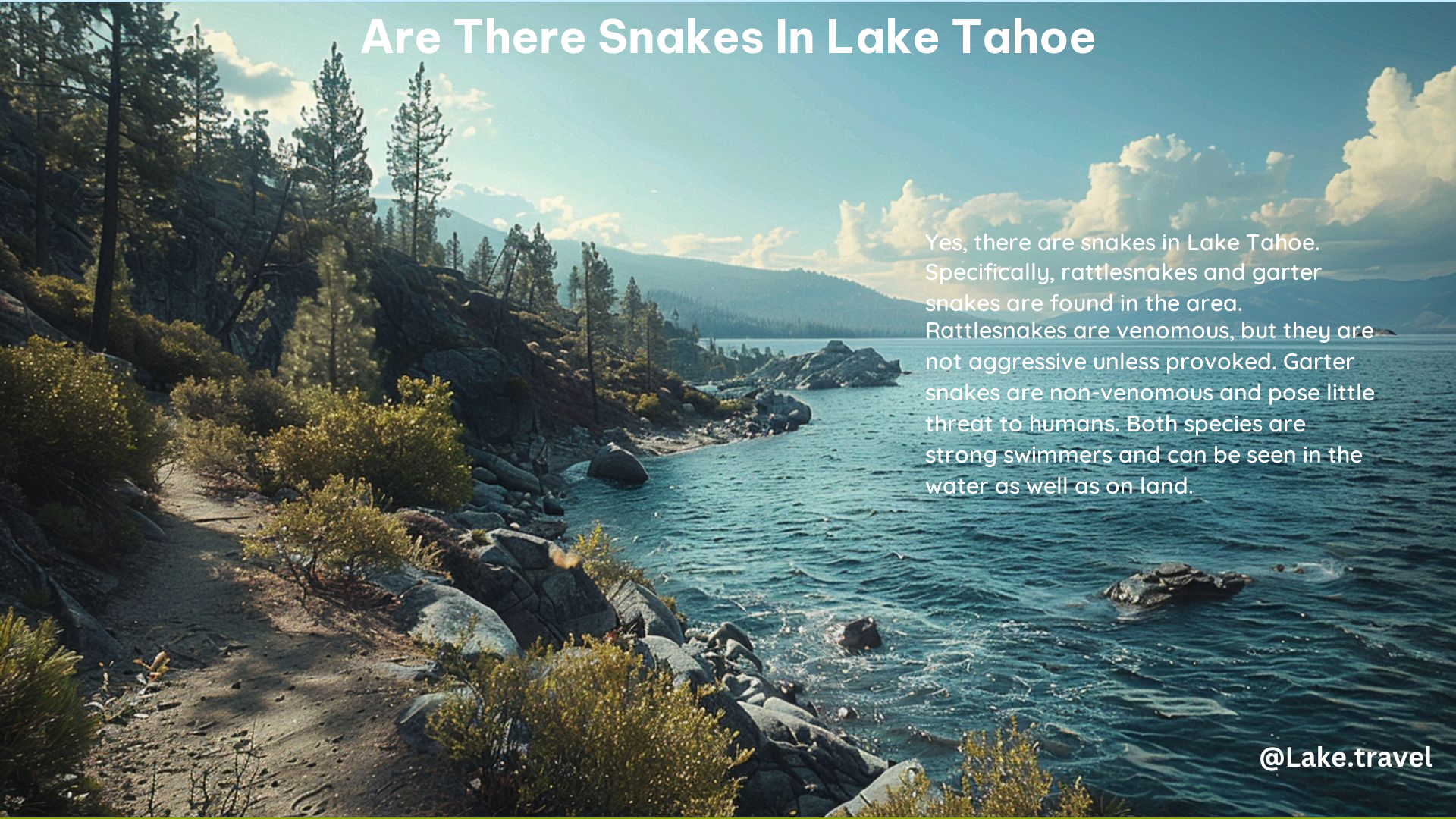Yes, there are snakes in the Lake Tahoe area. The most common species found in the region are the Great Basin Rattlesnake and the garter snake. Both of these species are known to inhabit the area and can be encountered on land and in the water.
Species of Snakes Known to Inhabit Lake Tahoe
The Lake Tahoe region is home to several species of snakes, with the most common being:
- Great Basin Rattlesnake (Crotalus oreganus lutosus): This subspecies of rattlesnake is found in California, particularly in the far northeastern part of the state, which includes the Lake Tahoe region.
- Garter Snake: Garter snakes are non-venomous and are commonly found in the area. They are strong swimmers and can be seen in the water as well as on land.
Likelihood of Encountering Snakes During a Visit to Lake Tahoe

The likelihood of encountering snakes during a visit to Lake Tahoe is relatively low but not impossible. Rattlesnakes are more active during springtime when they come out of hibernation, and they tend to be more common on the west slope of El Dorado County where temperatures are warmer. However, sightings of rattlesnakes in the Lake Tahoe Basin are still relatively rare.
Safety Precautions
To minimize the risk of encountering snakes, it’s important to take the following safety precautions:
- Be aware of your surroundings: Pay attention to your environment, especially when hiking or walking in areas with dense vegetation.
- Use a walking stick: A walking stick can help you detect snakes before stepping on them.
- Keep your dog on a leash: Dogs can unintentionally provoke snakes, so keeping them on a leash can help prevent encounters.
- Avoid placing your hands or feet where you cannot see clearly: Snakes often hide under rocks, logs, or other objects, so be cautious when reaching into dark or hidden areas.
- Seek medical attention if bitten: If you or your dog are bitten by a rattlesnake, seek medical attention immediately.
Additional Information
- Rattlesnake Behavior: Rattlesnakes are generally not aggressive unless provoked. They will often give a warning by rattling their tails before striking. If you hear the rattle, move away from the area.
- Snake Habitat: Snakes are ectothermic, meaning they rely on external sources of heat. They are often found basking in the sun during early morning or evening and seek shelter during the hottest part of the day.
- Other Wildlife: Lake Tahoe is home to a variety of wildlife, including bears, coyotes, and mountain lions. Be aware of your surroundings and take necessary precautions to avoid encounters with these animals.
